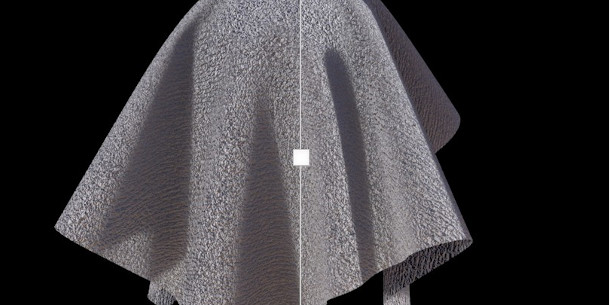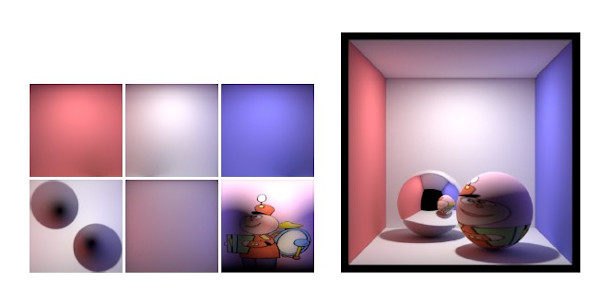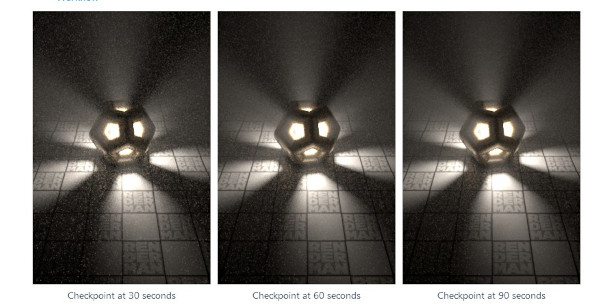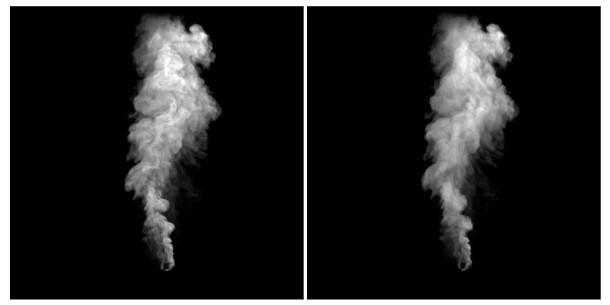Pixar ships RenderMan 23.5
Originally posted on 4 December 2019. Scroll down for news of the 23.5 update.
Pixar has released RenderMan 23.0, the latest version of its production renderer, improving interactive rendering workflow, and updating the software’s adaptive sampling system.
RenderMan’s Houdini integration plugin gets support for Solaris, Houdini 18.0’s new look dev and shot layout toolset, and Houdini’s Procedural Dependency Graph.
The free non-commercial version of the software has also been updated, and is available now.
Further improvements to interactive rendering workflow
RenderMan 23.0 improves the new interactive rendering workflow introduced in last year’s RenderMan 22.0.
The 22.0 update removed the intermediate step of rendering to RenderMan’s old RIB format in interactive sessions, and made it possible to edit a scene without having to restart a render.
In 23.0, the range of edits that can be made without restarting has been extended, now including changing resolution and “dynamic editing of AOVs and LPEs” as well as simply authoring Light Path Expressions.
In addition, Pixar has added a new ‘decidither’ option, intended to “reduce tearing by updating the whole screen progressively with a dissolve-like effect” when working on heavy scenes.
A range of changes under the hood
Other changes include an update to RenderMan’s adaptive sampling system, which now uses statistical variance to determine when to stop sampling a pixel, and which now works in perceptual space.
Pixar says that the changes should result in “more consistent levels of noise” across an image.
RenderMan has also been updated to a newer version of the VFX Reference Platform, although it’s the 2018 spec, rather than the newer CY2019 standard supported in recent Autodesk and Foundry releases.
The plugin API has also been updated, so plugins will need to be recompiled before they can be used.
Other than that, Pixar’s press release cites “enhanced support” for USD, Pixar’s open format for exchanging scene data between DCC applications.
However, the only change listed on the product website is the option to render to the USD Hydra viewport via the hdPrman plugin, which was introduced with RenderMan 22.6. We’ll update if we find out more.
There’s also no mention in the release material of RenderMan XPU, Pixar’s upcoming hybrid CPU/GPU rendering system, scheduled for the “RenderMan 23 timeframe”. Again, we’ll update if we hear more.
RenderMan for Houdini gets support for Solaris and the PDG
Outside of the core software, the Houdini integration plugin gets a significant update, adding support for the RenderMan Hydra delegate in Solaris, Houdini 18‘s new look dev and shot layout toolset.
The delegate enables RenderMan to be used as a viewport renderer in place of SideFX’s Karma renderer.
In addition, RenderMan for Houdini offers “additional interactive display options, batch rendering options, RenderMan-specific geometry settings, and … advanced settings for light sources when using Solaris”.
The update also introduces support for the Procedural Dependency Graph, Houdini’s task-scheduling and dependency-management system, introduced in Houdini 17.5.
Users get Houdini TOP nodes for scheduling renders, denoising and the generation of textures and RIB files.
Free non-commercial edition of RenderMan 23.0 available to download now
Unlike the past few major updates to RenderMan, the free non-commercial edition of the software has been updated in sync with the commercial release, rather than several months later.
It isn’t watermarked or feature limited – although it does time out every 120 days – and can be used for personal projects, research, and tools development, including the development of commercial plugins.
To download it, you will need to register for a free account on Pixar’s forum, which entitles you to two node-locked licences. You can find more details in Pixar’s online FAQs.

An image from upcoming Pixar feature Onward, used as a marketing graphic for RenderMan 23.1.
Updated 24 January 2020: Pixar has released RenderMan 23.1.
The update adds a new roughness parameter to the PxrSurface material, making it possible to have separate roughness values for reflections and refractions in glass.
Maya users get a number of workflow improvements when working with Alembic caches, including the option to auto-save edits to RenderMan Look Files, plus support for Maya 2020.

Original (left) and new handling of surface shadowing when using bump or normal maps in RenderMan 23.2.
Updated 5 March 2020: Pixar has released RenderMan 23.2. It’s mainly a bugfix release, though BxDFs get a new, optional parameter that results in “smoother, more natural shadowing” with bump or normal maps.

Six global illumination maps baked from the Cornell box on the right using RenderMan’s new baking system.
Updated 20 May 2020: Pixar has released RenderMan 23.3. It’s a significant update, adding support for baking illumination, both to 2D textures and 3D point clouds.
The changes both restore functionality lost in the transition from the old Reyes pipeline to RenderMan’s new RIS framework, and extend the software’s original baking capabilities.
As in ray trace rendering, Light Path Expressions can be use to isolate arbitrary components of the global illumination in a scene for baking.
Suggested use cases include precomputing pattern graphs and baking lightmaps: either to optimise renders within RenderMan itself or to generate assets that can be used in game engines like Unreal Engine.
It’s still a work in progress, and comes with some limitations: baking is not compatible with curves, and is non-incremental, so it can’t be used with the PxrVCM bidirectional path tracer, or stop-and-resume rendering.
Other changes include support for macOS 10.15 Catalina, and for rendering packed USD geometry within the geometry context in RenderMan for Houdini. You can find a full list of changes via the links below.

Updated 3 September 2020: Pixar has released RenderMan 23.4.
The update improves the Checkpointing process, making it possible to save state of an image at a series of intervals during rendering. Interrupted renders can be resumed from the checkpoints.

Updated 3 November 2020: Pixar has released RenderMan 23.5.
The update introduces a new Eulerian method for calculating deformation motion blur on volumes, which Pixar says reduces pre-processing times and memory use over the old Reves method.
Mesh lights and emissive volumes are now importance sampled according to relative power over the surface or volume, which should result in noise-free images in a shorter time.
The Houdini plugin gets improved support the Solaris toolset, including support for AOVs, LPEs, and the new interactive crop and depth of field features introduced in Houdini 18.5.
Since we last updated this story, Pixar has also previewed RenderMan 24 and its new official Blender plugin.
Pricing and availability
RenderMan 23.5 is is available for 64-bit Windows 8.1+, macOS 10.13+ and CentOS/RHEL 7.2 Linux. The integrations are compatible with Maya 2018.3+, Houdini 17.0+, Katana 3.0+ and Mari 4.5+.
New node-locked or floating licences cost $595.
Read a full list of new features in RenderMan in the online release notes
Read a full list of new features in the integration plugins
Download the free non-commercial version of RenderMan 23 (Registration required)
